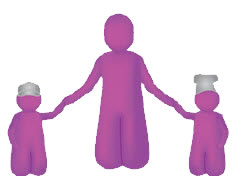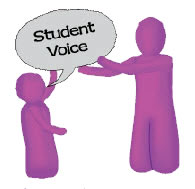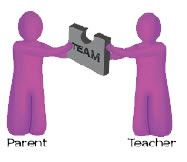
Co-construction
How do we achieve this?
We need to ...

Know our students
- Value and use prior knowledge as a starting point for new learning
- Identify passions and use them to inspire learning
- Know how individuals learn best – cater for a variety of learning styles
- Know personalities and student worlds
How do we achieve this?
- At the start of a unit: brainstorm what you know, showing pictures for recognition, brainstorming questions, graffiti wall (big sheet of paper up for a week to write what you know or wonder about an upcoming topic)
All of the above – accept and record all answers - giving (student) experts a chance to share their knowledge
- multiple intelligences – ask students their preferences and using them to plan their learning, e.g. letting musical child sing in their learning or presentation; letting oral child give a speech; let kids show their knowledge in a medium that suits them
- starting with a ‘me’ topic to get to know students at the start of the year
- School camps & trips
- news (donut, buzz groups etc)
- roll – short personal question chosen by the teacher or student
- reflection/diary writing

Encourage and act on student voice
- Ensure students have a genuine say in their learning:
- what they learn, how they learn something, how they present their learning
- multiple intelligences – asking students their preferences and using them to plan their learning, e.g. letting musical child sing in their learning or presentation; letting oral child give a speech; let kids show their knowledge in a medium that suits them
- what they learn, how they learn something, how they present their learning

Practise co-operative learning (share, design and build learning together)
- Use a range of skills and strategies to work co-operatively and in groups
- Teachers, students and parents are genuine partners in learning
- Students and teachers share and reflect on the learning process
- think, pair, share
- bus stop
- group projects with clear criteria and a timeline
- buddy reading within and across groups
- working with and helping children from other cultures
- peer tutoring
- sharing and reviewing learning intentions (not always teacher-telling, but allowing students to be part of the discussion); evaluating work with smiley faces or thumbs up/sideways/down, or out of 10 on fingers…
- peer assessment – written or oral
- buddy editing
- jigsaw – breaking up a topic for groups to study a ‘piece’, then report back to put the pieces together. (sharing expertise)
- teachers include, explain and talk with parents rather than defend or justify
- parent helpers (get them on board so they are informed about goals); reading and responding to parent comments on mid-year summaries; sending notes or newsletters home to parents; including classroom updates in homework books; giving orientation info at meet the teacher and to parents of new students throughout the year; inviting parents/grandparents to speak/share as ‘experts’ in the classroom; acknowledging and emphasizing the importance of follow-up work done at home, e.g. regular reading, practicing basic facts and spelling; letting parents know during incidental meetings of good progress in the classroom

Ensure Student Success
- set high expectations for every student
- provide direct instruction and modeling as a framework for learning
- focus on where to next and how to get there
- goal-setting – personal goals could be written in writing books such as a checklist, set a target for length or content to keep chn on task, oral feedback
- share assessment criteria and data with the students, including creating criteria
- rubrics, exemplars, planning a task, modeling to set expectations
- having real and meaningful contexts for learning, such as relating learning to a current event or timely topic
- having a product to share at the end of the unit or lesson
- including tactile rewards such as food for fractions or other maths
- provide feedback and feedforward
- start a unit with a powerpoint
- show a stage-by-stage example or demonstrate (e.g. with artwork or a game or skill)
- modeling writing and editing, using class input
- showing an example of a genre of writing, e.g. from a school journal
- getting chn to explain a concept, such as a maths strategy, to help another child understand
- record direct instruction and keep it accessible to chn
- personal, specific feedback and feedforward for each student (conferencing or in writing, and in teacher planning)
- ensure that students are not ‘short-changed’

